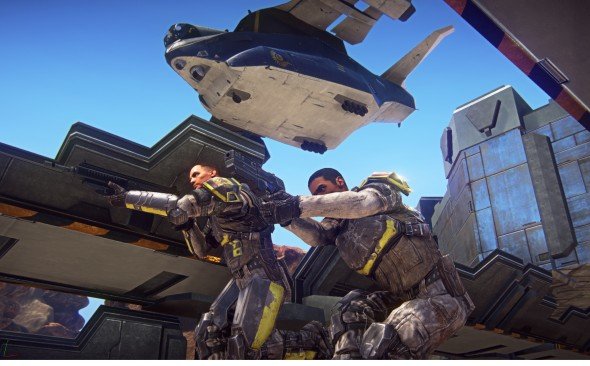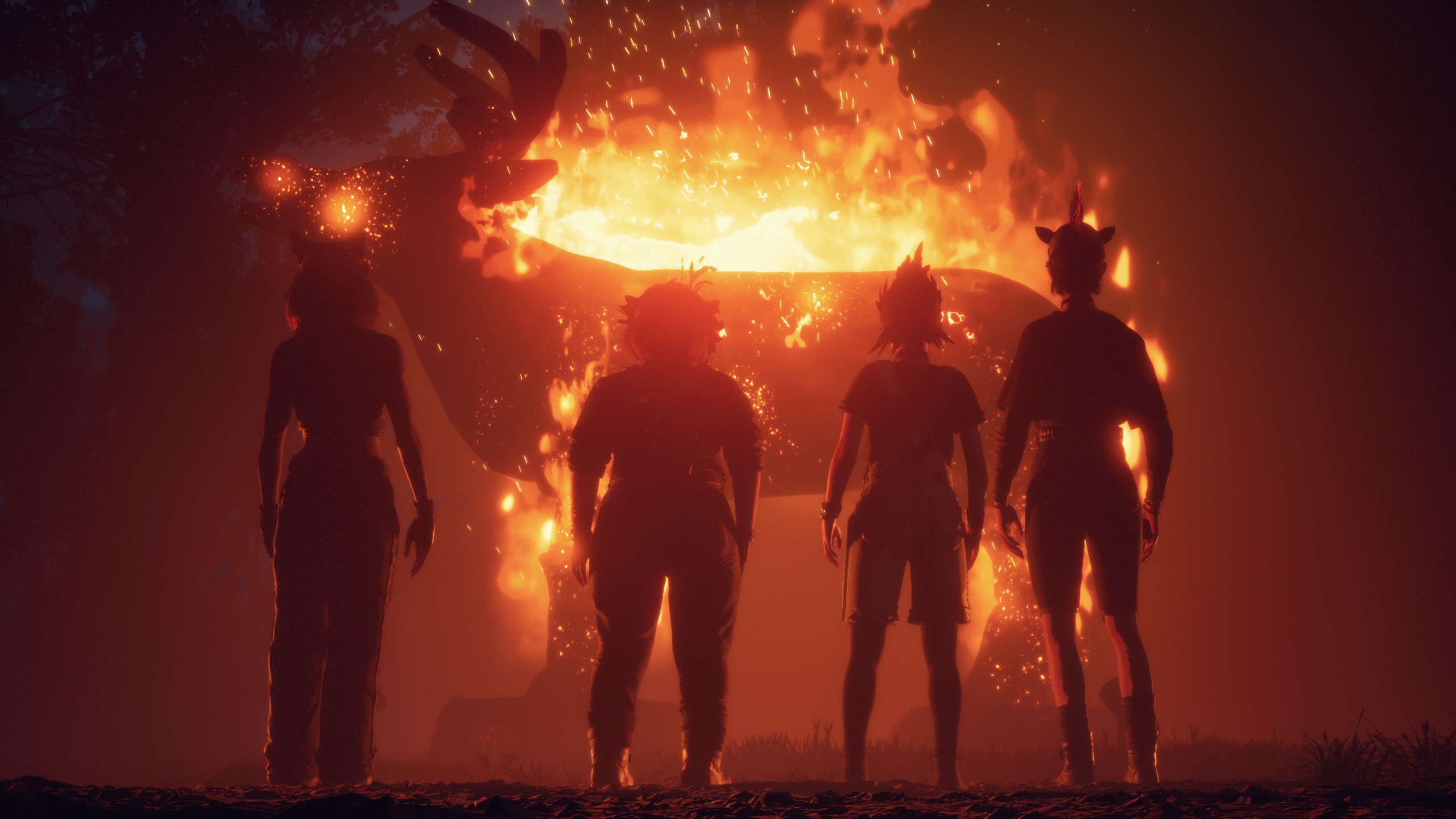Planetside 2 preview

PlanetSide 2 has really nice clouds. As they bubble up over the rust red mesas of the Indra continent they occlude the sun, casting undulating shadows in realtime and leaking ghostly, shimmering rays. If you care to hop into an aircraft and point your nose up, you can lose yourself in the fogbank – which may be a hazard or a blessing depending on who's chasing you.
All this may seem like a minor frill for a game that otherwise sells itself on big gun battles, but it goes to the core of PlanetSide 2's remit, and spells out its vital difference from other claimants to the MMOFPS title, such as Dust 514. As creative director Matt Higby puts it, “We're not just building a shooter, we're building a world.”
This would sound like puff if it weren't true. Like the original game, PlanetSide 2 is set on an open world of sprawling, diverse continents. This is the planet Auraxis, contested by the game's three violently opposed factions. And that planet is there for more than just scene-setting – it's as much a weapon as any sidearm. The terrain may look fresh from Mother Nature's oven, but it's been attentively tweaked to break lines of sight, to allow for cover and clever tactics.

“One of our largest development efforts on this project has been hand crafting every single area of those eight-by-eight kilometre continents,” Matt tells me. “To make sure that everywhere you're playing, from a wilderness area to a really dense facility area, all feel like they're custom created to support gameplay. And different types of gameplay: if I'm out in that wilderness area, depending on the availability of cover, the type of terrain, then it might be a field day for air vehicles, somewhere air vehicles can shine. But if there's a lot of cover, a lot of places where infantry can pop out and fire a rocket, then suddenly it becomes a little bit more balanced.”
With a full day-night cycle, new strategies emerge: as the Terran Republic mass to deliver a 200-man hammerblow to a Vanu Sovereignty facility, they might scale an escarpment under cover of dark, flashlights off to give as little sign of their presence as possible. Then, as the rosy fingers of dawn stretch over the hillside to their backs, the soldiers follow the light washing down upon dazzled Vanu guards. Nor is this some canned Call of Duty skirmish, exactingly recycled with every victory – the target has been selected as part of a global strategy, hundreds upon hundreds of players self-organising to determine the time and angle of attack. Squad leaders pinpoint immediate objectives, focusing fire on a troublesome turret or rushing the barrier shield generator to allow aerial bombardment, while dedicated tank guilds roll in to breach the Vanu strongpoint's courtyard. A spec'd up Galaxy dropship acts as a mobile spawn point, spewing out reinforcements as allied Mosquitoes zip and weave in the skies, dogfighting with the defenders' Scythes.
The Vanu commanders will be hurriedly reacting to the assault, too, highlighting the battlezone as a high priority mission for all of their factionmates to see, manoeuvring and plotting, interpreting the repercussions of their loss or victory in the context of an ever-changing frontline. Since capture-time on an objective is based on the amount of peripheral real-estate that is claimed by your faction, real battlefield strategy emerges: pincer movements and encirclements become important ways to shore up a major assault and deny the enemy an easy recapture. The choice of targets may be influenced by the resources they contain. A plentiful supply of metal, nanites, or auraxium enables factions to deploy upgrades, their function varying for each of the three empires.

Denial is as important as acquisition, Matt tells me. “If the Vanu is attacking you and they have railguns on their mag riders, and they are fucking you up, then you know you need to capture auraxium and deplete their reserves.”
The biggest gaming news, reviews and hardware deals
Keep up to date with the most important stories and the best deals, as picked by the PC Gamer team.
But as a mere grunt, that high-level strategy is another's concern – on the ground you are one gun among hundreds, crashing against the walls of a vast facility whose three courtyards are themselves each the size of a Modern Warfare multiplayer level. Energy beams lance out from the defenders and rocketry spirals after targets through the still-dark sky, leaving a trail of smoke that sears bright in the HDR glow of the rising sun.
PlanetSide 2 does big and it does beautiful. To some extent it has to in order to overcome the dual stigma of being both an MMO and a free-to-play game, neither of which are famed for their glitzy production qualities.
“For me it's all about seeing the game as an FPS – and that's it,” says senior art director Tramell 'T.Ray' Isaac. “When we were working on [cancelled SOE game] The Agency, one of the comments we got a lot was, 'It looks pretty good for an MMO.' And that 'for an MMO' should not even be in the equation for me. People should look at it and see that it's got the same level of quality as every other FPS on the market.”
PlanetSide 2 succeeds on that account, and then some – but does it play like an FPS, too? The old PlanetSide's combat was muddied by unseen dice-rolls, not to mention creaking on 2003's hardware specs and squeaking awkwardly through the internet's tiny, tiny pipes. Not so now, says Matt. Not only has technology caught up with the original game's forward-thinking vision, but the devs have a keener idea of what makes a satisfying run-and-gun experience. Bullets go pretty much where you fire them and the guns are not only lethal but feel it, too.

